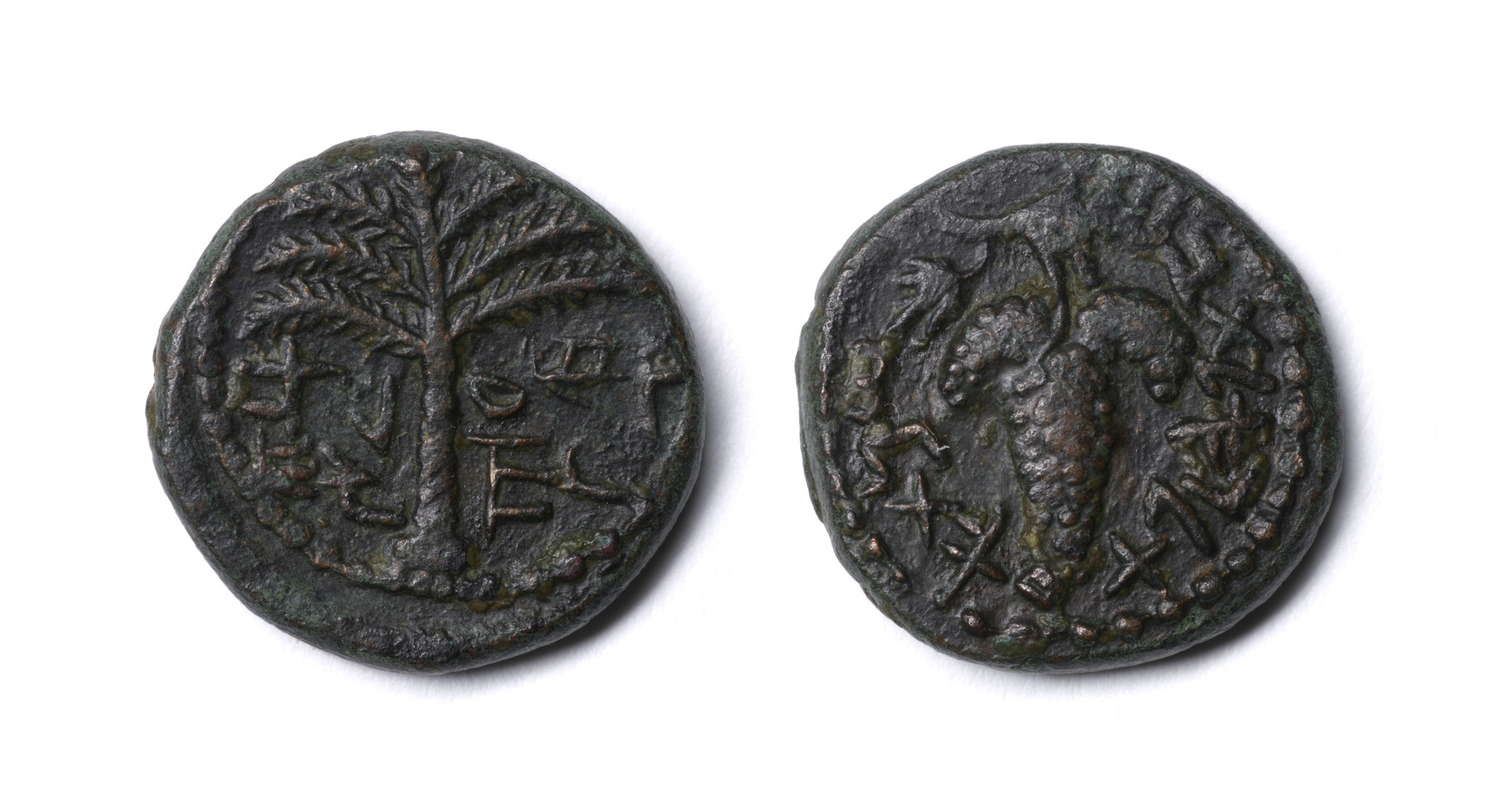Coin of Judaea
On the obverse is a palm tree with dates; the legend, in Paleo-Hebrew (written with retrograde letters), reads “Eleazar the Priest.” On the reverse is a grape bunch surrounded by a Hebrew inscription that proclaims it is “Year One of the Redemption of Israel.” This coin was struck during the conflict between Judea and the Roman empire commonly known as the Bar Kochba Revolt (132-136 CE), after the leader Shimon Bar Koseba or Bar Kochba (son of the star). Minting coinage was itself a sign of rebellion against the Romans and a claim to sovereignty. Most of the Bar Kochba coins are struck over foreign coinage that was taken out of circulation and filed to remove the existing imagery. The Judaeans then struck the coins with symbols, such as the date palm and grapes, and legends related to Judaea and the Temple, which was destroyed by the Romans in the First Jewish Revolt (66-70 CE).
Provenance
Provenance (from the French provenir, 'to come from/forth') is the chronology of the ownership, custody, or location of a historical object. Learn more about provenance at the Walters.
Sale, Bank Leu & Co and A. Hess, Jüdische Münzen: Bellum Iudaicum, Iudaea Capta, Bar Kochba-Krieg, Lucerne, 3 April 1963, lot 112, pl. 8; Sale, Frank Sternberg Auktion XXIX, Zurich, 30 October 1995, lot 188; Jay Galst, New York, 1995, by purchase; Sale, Triton XXV, New York, 11 January 2022, lot 409; Walters Art Museum, 2022, by purchase.
Geographies
Israel, Judea (Place of Origin)
Measurements
Diam: 3/4 in.; Weight: 0.01 lb. (1.9 cm, 5.88 g)
Credit Line
Museum purchase with funds provided by the W. Alton Jones Foundation Acquisition Fund, 2022
Location in Museum
Not on view
Accession Number
In libraries, galleries, museums, and archives, an accession number is a unique identifier assigned to each object in the collection.
In libraries, galleries, museums, and archives, an accession number is a unique identifier assigned to each object in the collection.
59.803


